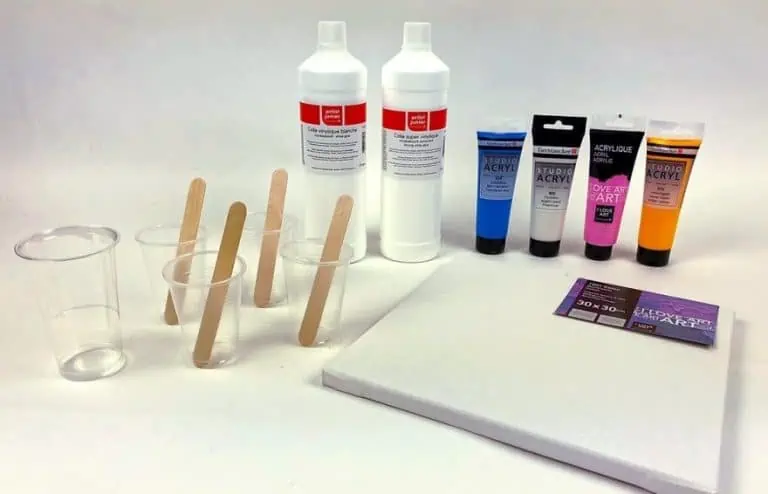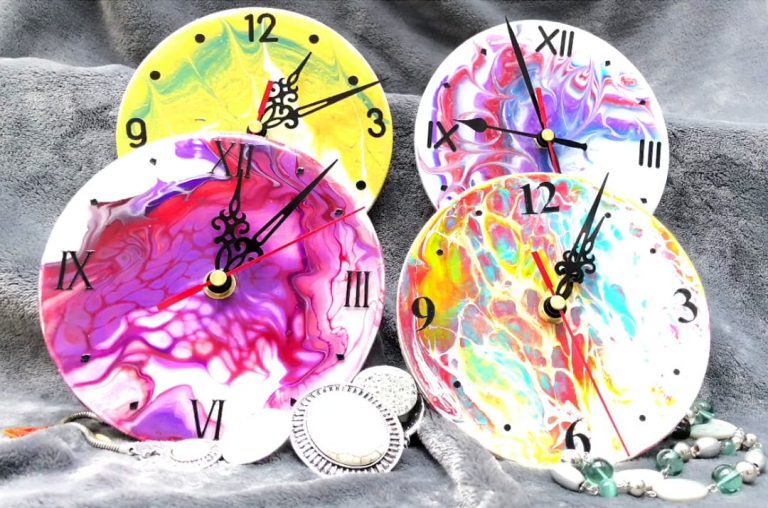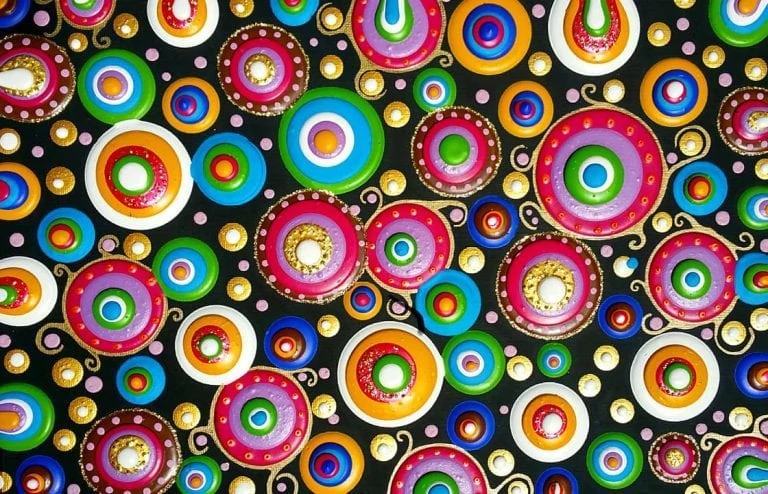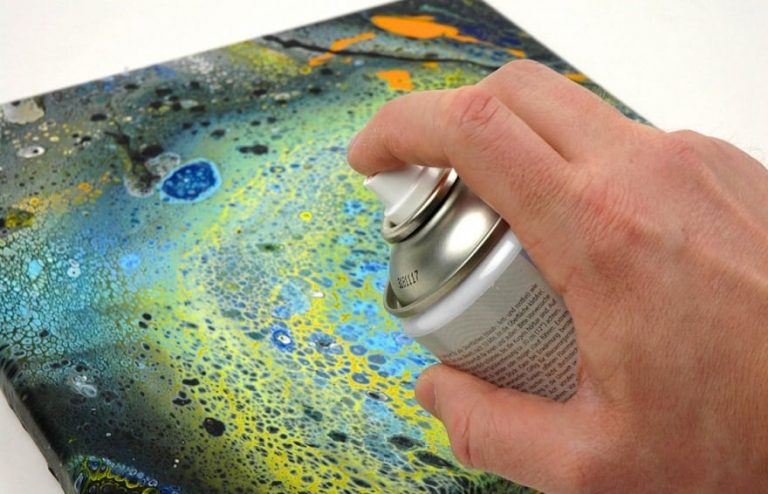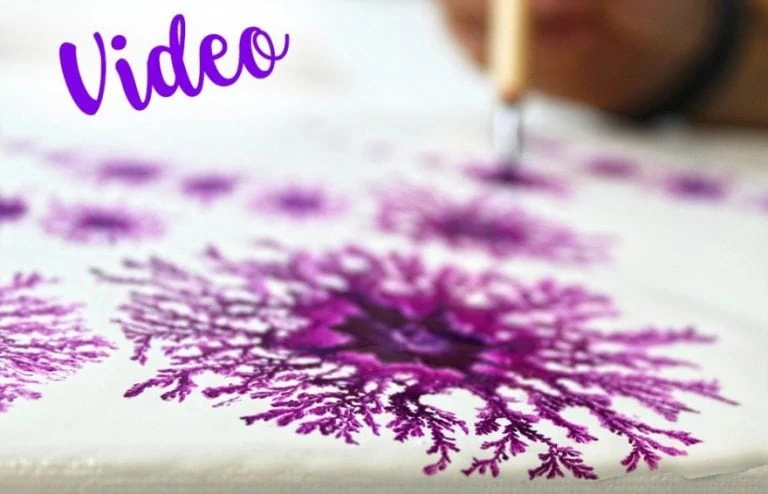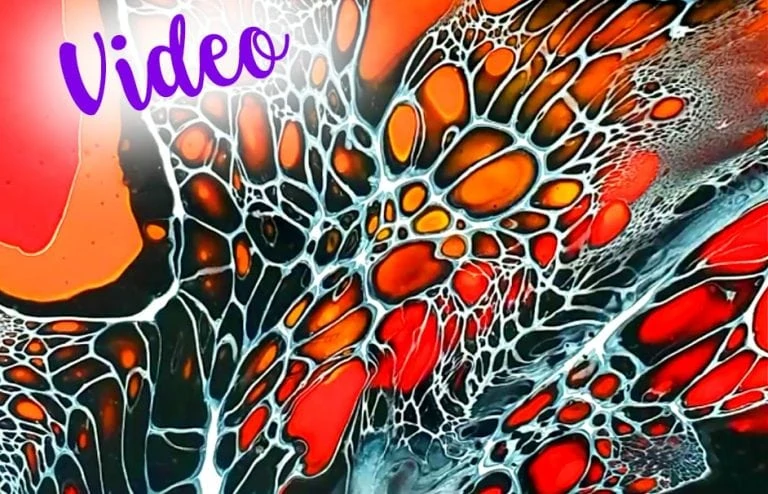Turn your Acrylic Pouring Skins into Cabochon Jewellery
This post may contain affiliate links. We may earn a small commission from purchases made through them, at no additional cost to you.
With this article I bring you closer to the topic of Acrylic Pouring Jewellery making with acrylic skins. I’ll tell you the right technique and important tricks how you can make beautiful, trendy cabochon jewelry yourself with the acrylic skins, the so-called “skins”. You will also find a lot of exciting information about these great pieces of jewelry. Let yourself be inspired!
Table of Contents
What is Cabochon Jewellery?
Cabochon jewelry is fashion jewelry in retro vintage style, which is very fashionable at the moment. The jewelry is characterized by large, convex cut (glass) stones. For acrylic pouring artists it is a great possibility to process the acrylic skins further or to make the skins, especially for the jewelry. Because by the 3D effect of the cabochon cut the cells and the structures are particularly beautifully emphasized. So we have the possibility, instead of pouring the pour on the canvas, to transfer the effect into another art form.
What does Cabochon mean?
Cabochon is the name given to cut, but unfaceted gemstones with a flat underside and an outwardly curved upper side. The cabochon cut accentuates color shades, structure and shimmer of a stone, like tiger eye, opal, moonstone etc. The cabochon cut is a very old gemstone cut.
To make cabochon jewelry ourselves, we do not use precious stones, of course, but clear glass cabochons. These in the respective form as we have chosen our setting. That can be square, triangular, round, oval, rectangular, etc.. The glass cabochons are also offered in different heights. The offer is huge!
I personally like to work with products from US manufacturers, such as the brands JGFinds, eBoot or Sunnyclue. They also offer some Cabochon jewelry sets (blank, cabochon and chain). Especially for beginners this is ideal, or if you just want to make a few pieces of jewelry.
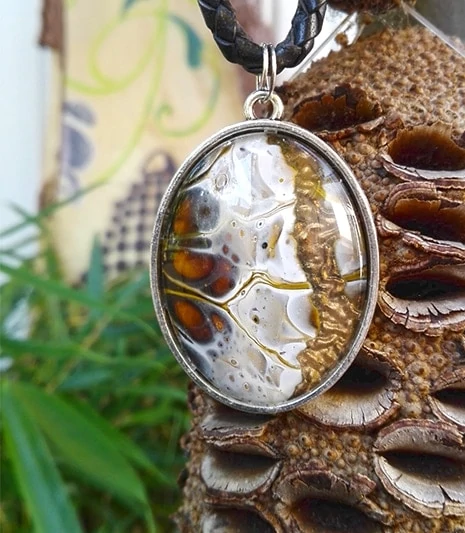
Material List to make Acrylic Pouring Cabochon Jewellery yourself
- Acrylic skin cast on foil
- Glarks Cabochon Set, 4 Styles Pendant Trays
- Swpeet Cabochon Set Assorted Pendant Trays
- JGFinds Cabochon Mixed Adjustable Ring blanks, Variety Sizes & Colors
- Sunnyclue Cabochon Set Earring Wire Hooks and Studs, 12 mm
- Black waxed necklace Cord Set
- Silver Plated Neck Snake Chain Necklace
- Square Rolo Stainless Steel Chain Necklace
- Jewelry Glue
- Cotton Swabs
- Microfiber Cleaning Cloths
- Curved Craft Scissor
- Cutter Knife
Compatibility of Costume Jewellery
Since 2001, the EU has imposed a ban on alloys that release large amounts of nickel. Heavy metals such as lead, nickel and cadmium are known to be allergens and can affect health in the long term. Since June 2001, the Regulation has allowed objects that come into permanent or frequent contact with the skin to release nickel only at a rate of 0.5 micrograms per square centimetre per week. Such objects include not only zippers, buttons and mobile phones, but also costume jewelry. Despite this regulation, I advise you to study the manufacturer’s details carefully before buying the jewelry frames. To be on the safe side, I recommend stainless steel frames. This one is 100% anti-allergenic.

Make Acrylic Pouring Jewellery yourself with Acrylic Skins
Making the Acrylic Skin
- Fix a freezer bag on a wooden plate with pin needles to be able to move the pour later.
- I recommend the following color mixture: 1 part color, 2 parts pouring medium. I like to use Floetrol here. In addition, I add silicone for cell formation and water. The water makes the skin firm and can be easily removed and cut later.
- I personally find three colors plus black and white sufficient – less is more here. Pearl colors are also very suitable for special effects.
- From a color palette I pour one Dirty Pour, one Flip Cup and additionally one Swipe. So later I have different patterns available – from fine lines to spectacular cells.
- The removal of the air bubbles with the help of a Butane Torch is extremely important. Be aware that you are working on plastic – so keep enough distance! After the skin has dried, you can wash down the silicone with a soft cloth and a dishwasher solution. Then let it dry well again.
Stick on the Cabochon and insert into the Socket
- Now your artistic eye is in demand. Find a place by driving your vitreous body over your skin. So you can see exactly what your piece of jewelry will look like later. Once you have decided, put a small amount of jewelry glue on the glass, place it on the skin and slide it back and forth to avoid air bubbles.
- Allow the whole thing to dry completely.
- After drying, remove any glue from the edge, otherwise the glass will not fit into the frame.
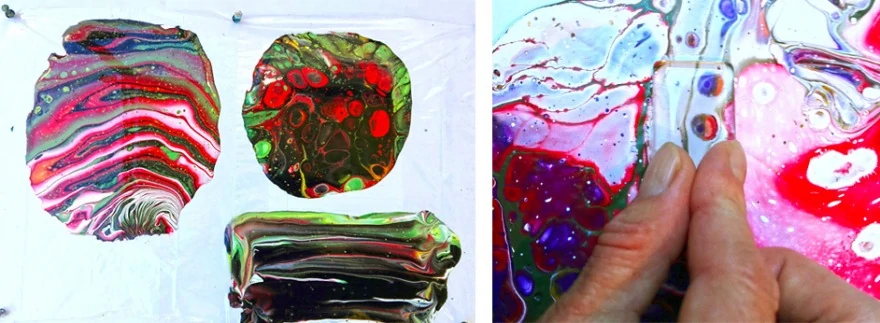
- Now you can cut the cabochon out of the skin. The rough work with the cutter and for the fine work is best a cuticle scissors.
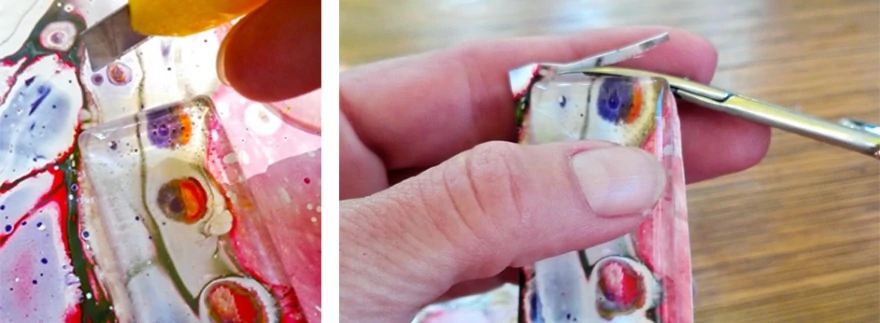
- Coat the selected blank with glue and glue the cabochon into the frame under pressure.
- Remnants of the glue can be easily removed wet with a cotton swab.
- Finally, polish the whole thing with a microfibre cloth and choose a suitable chain or leather strap, depending on the style of your piece of jewelry.

Now I wish you lots of fun experimenting and making your own cabochon jewelry! Christmas time is coming, and the trendy Acrylic Pouring jewellry is perfect as a trendy present! 🙂

Pamela Kaufeis
Pamela Kaufeis was born in 1967 in Offenburg and also went to school here. After completing her secondary education, she trained as a hairdresser and has remained true to her profession to this day. She is married and lives with her husband and her dogs in the beautiful Zell-Weierbach in Baden-Württemberg.
On the search for a new hobby, which let her reduce stress, Pamela came then in the middle of 40 to the art. She started with encaustics, vintage furniture and spray painting. Two years ago she saw Acrylic Pouring on the Internet and wanted to know how it works – she then acquired her knowledge autodidactically with the help of Youtube videos and of course countless Pourings. At small exhibitions at home, at markets and as gifts for friends, her works of art are very well received. Finally, Pamela was asked by the local artists’ supply last year if she could give them courses on acrylic pouring. In addition to her artistic work, Pamela has since passionately passed on her knowledge to beginners. Pamela’s latest passion is Acrylic Pouring Jewelry made of acrylic skins.
In 2005, Charlene completed her wellness degrees in therapeutic aromatherapy and reflexology at the International School of Reflexology and Meridian Therapy. She worked for a company offering corporate wellness programs for several years before opening her own therapy practice. In 2015, she was asked by a digital marketer friend to join her company as a content creator, and it was here that she discovered her enthusiasm for writing. Since entering the world of content creation, she has gained a lot of experience over the years writing about various topics such as beauty, health, wellness, travel, crafting, and much more. Due to various circumstances, she had to give up her therapy practice and now works as a freelance writer. Since she is a very creative person and as a balance to writing likes to be active in various areas of art and crafts, the activity at acrylgiessen.com is perfect for her to contribute their knowledge and experience in various creative topics.
Learn more about Charlene Lewis and about us.


